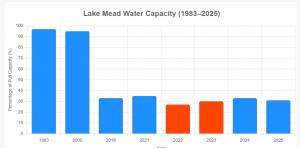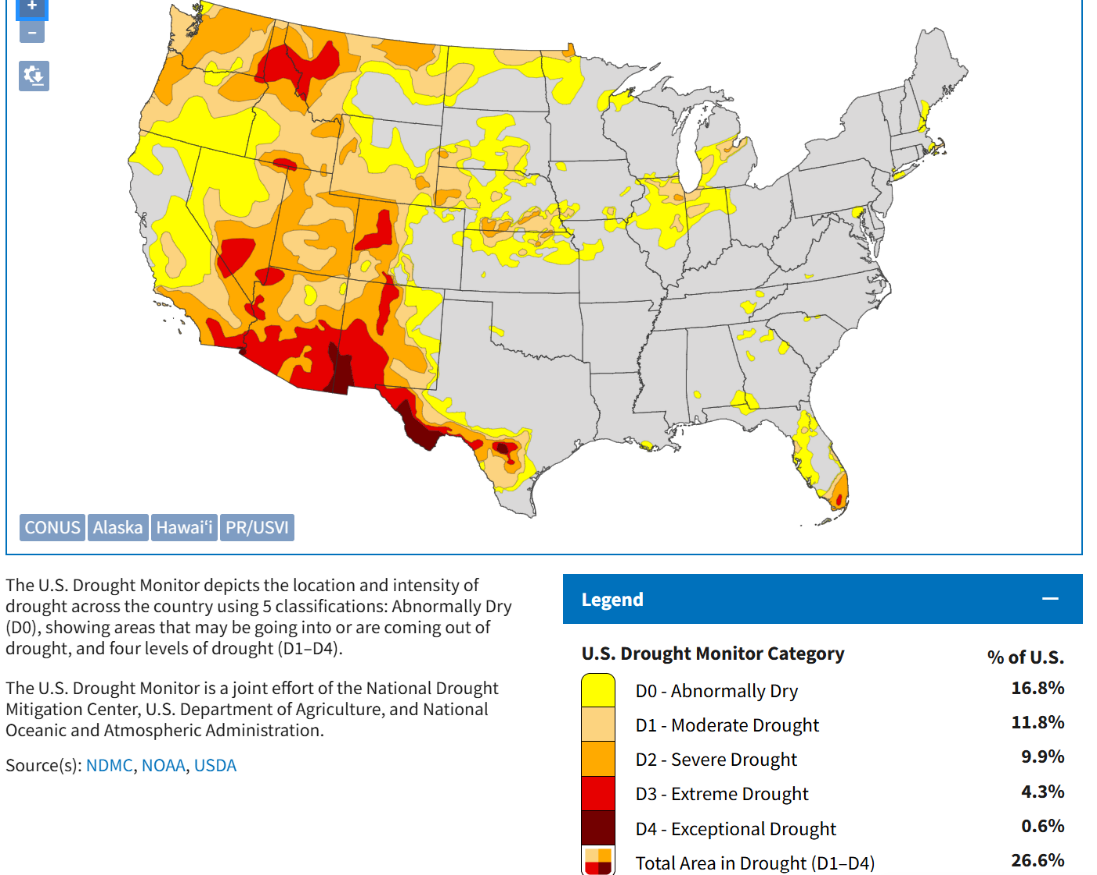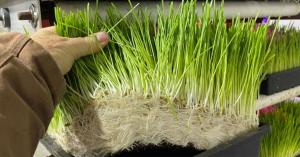Feeding 100,000 cows with fodder could save 200 Billion gallons—equal to the annual water use of 1 million U.S. homes.

Lake Mead’s water levels have dropped drastically from near full in the 1980s to around 30% capacity in recent years, highlighting the ongoing water crisis in the U.S. Southwest.
Strategic Proposal Addresses AI-Driven Data Center Water Demands Through Agricultural Innovation, Aligned with Inflation Reduction Act Funds.
In this drought-affected region, where AI data centers are increasing demand on water supplies, Sprouting Gear Inc. (SGI) founder Paul Pluss has presented a proposal designed to address both agricultural and technological water use. The company's hydroponic fodder system is estimated to reduce water consumption for cattle feed by up to 99.5%, potentially saving over 200 billion gallons of water annually while supporting 100,000 cows. SGI is evaluating access to Inflation Reduction Act (IRA) funding allocated for water efficiency and is exploring potential partnerships with technology sector stakeholders.
The expansion of AI infrastructure is increasing demand on limited water resources. The U.S. currently hosts 5,426 data centers, a figure projected to exceed 8,378 within five years. These facilities, which are essential to cloud computing and AI, require large quantities of water for cooling. In the Southwest, this demand intersects with agricultural needs—particularly cattle ranching, which depends on water-intensive crops like alfalfa. "This overlap presents an opportunity for integrated solutions," said Pluss, a hydroponic systems designer featured in MarketWatch and the Associated Press.
At the core of SGI’s approach is a modular fodder production system that grows barley indoors to replace conventional alfalfa. Barley fodder is cultivated hydroponically from seed in 9–10 days, forming a dense, fully edible mat of roots and grass. The resulting feed offers protein, calories, and nutrients comparable to alfalfa, along with live enzymes and probiotics. At nine days, it reaches the "true leaf" or “microgreen” stage—considered the optimal point for digestibility. Field demonstrations have shown livestock readily accept it, and in some cases, it has replaced significant portions of traditional feed.
System Highlights:
- Up to 99.5% less water use than alfalfa production
- 95% reduction in land use and associated emissions
- Potential eligibility for IRA funding under the Colorado River Basin Drought Mitigation program
- Exploration of offset partnerships with infrastructure operators, including Microsoft, Meta, and Google
One 50,000-square-foot facility can yield 60 tons of fodder daily—about 22,000 tons annually—sufficient to feed 3,000 cattle. This equates to 12,708 acre-feet of water saved each year, including seed irrigation. A total of 34 facilities could sustain 100,000 cattle and conserve approximately 637,895 acre-feet of water annually, equivalent to more than 207 billion gallons. Based on regional valuation, this represents an estimated $220 million in water offset potential.
To put this in perspective, 637,895 acre-feet equals approximately 208 billion gallons of water (1 acre-foot = 325,851 gallons). Using a common benchmark—that 1 acre-foot can supply two average urban households for a year—this volume could sustain around 1.28 million households annually. That’s roughly equivalent to the residential water needs of a city the size of Chicago or even Los Angeles, depending on conservation levels and regional usage patterns. While actual municipal water demands include commercial and industrial use, this comparison illustrates the scale of savings achievable through SGI’s approach.
Alfalfa typically requires around 570,000 gallons of water per ton. SGI’s fodder requires approximately 180 gallons per ton. Factoring in a 3:1 feed replacement ratio due to moisture content, the system still achieves 99.5% water efficiency. Pluss supports these calculations with a technical white paper titled "Scenario Analysis: Replacing Alfalfa with Hydroponic Fodder in Cattle Diets."
The system is designed to reduce feed transport and land use by sourcing barley seed locally. Barley requires less than one-fifth the water of alfalfa and matures in approximately 90 days, allowing for multiple harvests per year. This approach minimizes resource input while maintaining feed output.
"The technology is operational, and current policy incentives create opportunities for scale," said Pluss. "Our testing and partner outreach have identified multiple potential revenue streams, including water and carbon offsets, IRA grants, and feedlot cost savings."
SGI is seeking investors and collaborators to expand implementation. The company has reached out to data center developers and the U.S. Bureau of Reclamation regarding IRA-related funding and welcomes continued engagement. The proposed collaboration would support water conservation goals in both agriculture and infrastructure development.
For further details or partnership inquiries, contact Paul Pluss at info@sproutinggear.com
Paul Pluss
Sprouting Gear
email us here
Visit us on social media:
YouTube
LinkedIn
Instagram
Facebook
Legal Disclaimer:
EIN Presswire provides this news content "as is" without warranty of any kind. We do not accept any responsibility or liability for the accuracy, content, images, videos, licenses, completeness, legality, or reliability of the information contained in this article. If you have any complaints or copyright issues related to this article, kindly contact the author above.


